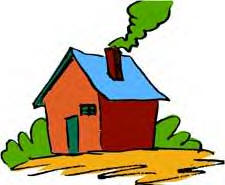Definition:
Pain, discomfort, or raw feeling of the throat, especially when swallowing
Causes:
* Colds (Upper Respiratory Infections): Most sore throats are part of a cold. In fact, a sore throat may be the only symptom for the first 24 hours.
* Viral Pharyngitis: Some viruses cause a sore throat without nasal symptoms
* Streptococcal Pharyngitis: Group A streptococcus is the most common bacterial cause. It accounts for 20% of persistent sore throats. Only these need an antibiotic.
Strep Throat:
* Symptoms include sore throat, fever, headache, abdominal pain, nausea, and vomiting
* Cough, hoarseness, red eyes, and runny nose are usually not seen with strep throat and are more suggestive of a viral cause.
* Scarlet fever rash (fine, red, sandpaper-like rash) is highly suggestive of strep throat.
* Peak Age: 5 to 15 years old. Uncommon if child is younger than 2 years unless sibling has strep.
* Diagnosis should be confirmed by throat culture prior to starting treatment (there is no risk to your child to delaying treatment until a throat culture can be performed)
* Acute rheumatic fever may occur in children not treated within 10 days of symptom onset
* Standard treatment is with penicillin or amoxicillin; other antibiotics may sometimes be used
Symptoms in Infants and Toddlers: Children younger than 2 years usually don’t know how to complain about a sore throat. A young child who refuses previously enjoyed foods or begins to cry during feedings may have a sore throat.
Return to School: Your child can return to child care or school after the fever is gone and your child feels well enough to participate in normal activities. Children with strep throat also need to be taking an oral antibiotic for 24 hours before they can return.
 Call 911 Now (Your Child May Need an Ambulance) If:
Call 911 Now (Your Child May Need an Ambulance) If:
Severe difficulty breathing (struggling for each breath, making grunting noises with each breath, unable to speak or cry because of difficulty breathing)
Call Your Doctor Now (or in Alberta, Canada call 780-408-LINK) If:
* Your child looks or acts very sick
* Difficulty breathing, but not severe
* Great difficulty swallowing fluids or saliva
* Stiff neck
* Signs of dehydration (very dry mouth, no tears with crying, and no urine for more than 8 hours)
* Purple or blood-colored spots or dots on skin
* Fever above 104°F (40°C) and not improved 2 hours after fever medicine* Weak immune system (eg, sickle cell disease, HIV, chemotherapy, organ transplant, chronic steroids)
Call Your Doctor Within 24 Hours (Between 9:00 am and 4:00 pm) If:
* You think your child needs an office visit or throat culture
* Sore throat pain is severe and not improved 2 hours after taking ibuprofen (eg, Advil)
* Pink rash that’s widespread
* Earache or sinus pain or pressure
* Fever present for more than 3 days
* Fever returns after gone for longer than 24 hours
* Child is younger than 2 years
* Exposure to strep within last 7 days
* Sores present on the skin
Call Your Doctor During Weekday Office Hours If:
* Sore throat is the main symptom and persists longer than 48 hours
* Sore throat with cold or cough symptoms is present more than 5 days
* You have other questions or concerns
Parent Care at Home If:
* Probable viral throat infection and you don’t think your child needs to be seen
 Home Care Advice for Sore Throats:
Home Care Advice for Sore Throats:
1. Reassurance:
Most sore throats are just part of a cold. The presence of a cough, hoarseness, or nasal discharge points to a cold as the cause of your child’s sore throat.
2. Local Pain Relief:
* Children older than 1 year can sip warm chicken broth or apple juice. Popsicles/freezies can give temporary pain relief (but use in moderation)
* Children older than 6 years can suck on hard candy (eg, butterscotch) or lollipops
* Children older than 8 years can also gargle warm water with a little table salt or liquid antacid added
* Medicated throat sprays or lozenges are generally not helpful.
3. Pain or Fever Medicine: Give acetaminophen (eg, Tylenol) or ibuprofen (eg, Advil) as needed for pain relief or fever above 102°F (39°C)
4. Soft Diet: Cold drinks and milkshakes are especially helpful (Reason: swollen tonsils can make some solid foods hard to swallow)
5. Contagiousness:
* Your child can return to child care or school after the fever is gone and your child feels well enough to participate in normal activities.
* Children with strep throat also need to be taking an oral antibiotic for 24 hours before they can return.
6. Expected Course: Sore throats with viral illnesses usually last 4 or 5 days.
7. Call Your Doctor If:
* Sore throat is the main symptom and lasts longer than 48 hours
* Sore throat with a cold lasts more than 5 days
* Fever lasts more than 3 days
* Your child becomes worse
Based on recommendations/advice in “My Child is Sick; Expert Advice for Managing Common Illnesses and Injuries”, 14th Edition, by Barton D. Schmitt
